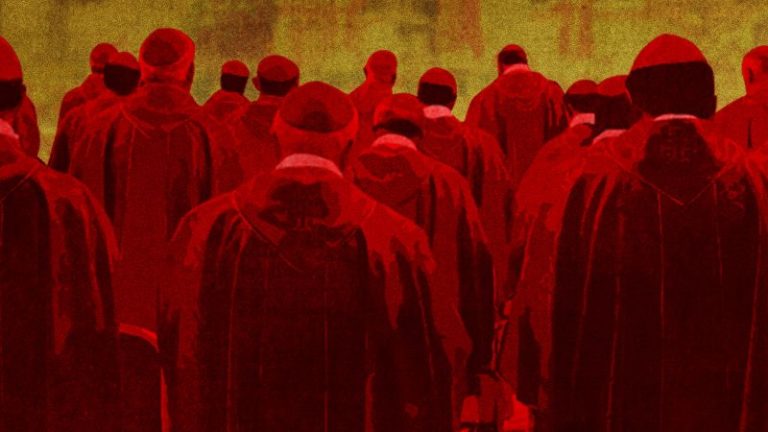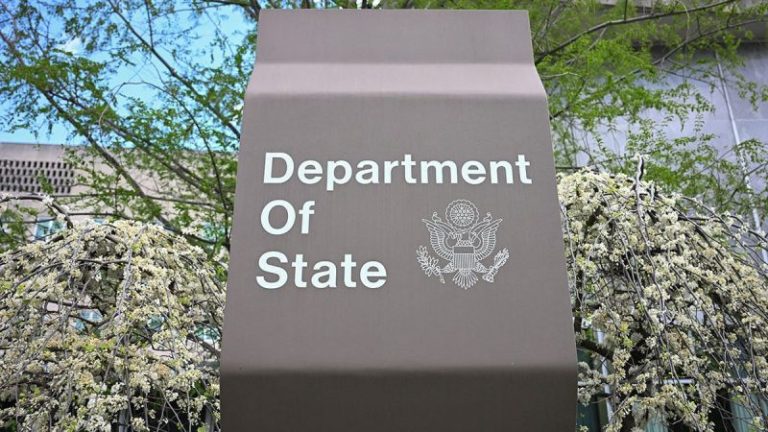Following the death of Pope Francis, a cardinal from the United States has become acting head of the Vatican until a new pontiff is elected.
He is Cardinal Kevin Farrell, a Dublin-born cleric who became a naturalized American citizen after spending many years ministering in the United States. Farrell, a former Bishop of Dallas, holds the position of “camerlengo” (or chamberlain) which tasks him with “overseeing and administering the temporal goods and rights of the Apostolic See” following the death or resignation of a pope.
It is the camerlengo’s job to “officially ascertain the Pope’s death,” place seals on the pope’s bedroom and study and make funeral preparations. The camerlengo is also tasked with making practical arrangements for the conclave, to ensure the confidentiality of proceedings and orderly voting.
Wearing white choir dress and a red stole (a vestment), he presides over the ceremonial service of the certification of death, “a first moment of prayer” following the death of the pope, and the placing of the body into a wooden and zinc coffin, according to a liturgical book for papal funeral rites which Francis had updated last year. He draws up “the authentic act of death” which is then attached to the death certificate that has been drawn up by the Vatican’s Director of the Department of Health and Hygiene. On Monday evening, the Vatican press office said Francis died of a stroke and heart failure.
The camerlengo’s powers are limited to the day-to-day administration of the Vatican and he chairs a committee of three other cardinals as he carries out his duties. When serious matters arise, he must consult with the wider body of cardinals.
Nevertheless, during the papal interregnum – the period between the death of one pope and the election of another – the camerlengo can request financial information from Vatican departments including details of any “extraordinary business” taking place. He can also demand “the budget and consolidated financial statement of the Holy See for the previous year, as well as the budget for the following year,” according to the constitution of the church’s central administration. During a papal interregnum, all leaders of the Vatican offices cease to carry out their work aside from the camerlengo and two others.
Farrell is a well-qualified camerlengo. The 77-year-old is unusual for a high-ranking church leader in holding a Master of Business Administration degree (MBA), from the University of Notre Dame, Indiana. Farrell is the highest-ranking US bishop in the church’s central administration and known as a strong decision maker and organizer who has the advantage of being a fluent English and Spanish speaker, the two most widely spoken languages in the global church. He is also known to speak Italian and Irish Gaelic.
Farrell’s expertise caught the attention of Pope Francis who made him one of his most trusted collaborators. In 2016, Francis appointed the then Bishop of Dallas to be the leader of the Vatican’s family life, later making him a cardinal and then, three years later, choosing him for the important and sensitive position of camerlengo.
But they weren’t the only responsibilities Francis gave the cardinal. In 2023, the pope appointed Farrell as President of the Vatican City state supreme court while naming him president of both the Vatican’s “Commission for Confidential Matters” and “Committee for Investments,” the latter designed to guarantee to the ethical nature of the Holy See’s financial investments. Farrell was also chosen to sit on the boards overseeing the Holy See’s property portfolio and the administration of Vatican City State.
Born in 1947, he left Ireland as a teenager and joined the Legionaries of Christ, a religious order founded in Mexico in 1941 which would later be plagued by the revelations of abuse by its founder, Marcial Maciel. Farrell, however, left the group decades before Maciel was revealed to have sexually abused dozens of minors.
The future cardinal studied in Spain and Rome and then worked in Mexico and the US. In 1984 he became a priest of the Archdiocese of Washington DC and went on to hold senior positions in the capitol’s local church. He would later face questions about what he knew regarding the case of former cardinal and Archbishop of Washington, Theodore McCarrick, found guilty by a church trial of abusing minors and of sexual misconduct against adult trainee priests. Farrell denied any knowledge of McCarrick’s behavior. “Did I ever know? No. Did I ever suspect? No. Did he ever abuse any seminarian in Washington? No,” he said.
While leading the Vatican’s Dicastery for the Laity, Family and Life, the cardinal appointed two women to senior positions in his department and has said that his successor could be a non-cleric. “My expertise is getting people to do the job, people who are qualified to do the job,” he has said. Service at high-level in the church seems to be in the family blood with one of Farrell’s brothers, Brian, also a priest and a bishop and has spent many years working in the Vatican.
He backed the pope’s merciful approach to divorced and remarried Catholics, with Francis opening the door to them receiving communion. “Fundamentally, this is about meeting people where they are,” Farrell explained. The cardinal described opposition to the late pope as “vicious” and “unprecedented” but insisted Francis had bought the church closer to the fundamentals of Christianity.
As the church prepares for a new pontiff, Farrell will seek to ensure the transition is as smooth and seamless as possible.










